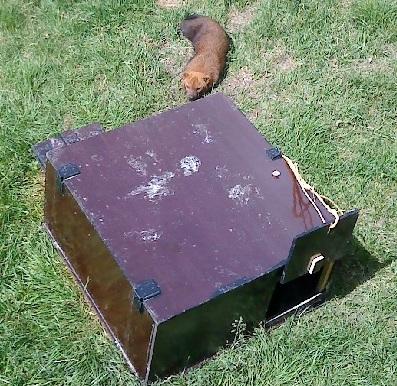Discussion
With increased weight, the time duration increased. Apart from the increased time it took for the bush dogs to empty the boxes due to the heavy weight, the bush dogs also spent longer time still interacting with the boxes afterwards. This might imply a higher interest in the boxes when the recquired workload is increased.
With increased weight, the bush dogs also used the correct entry less and increased their use of the incorrect entry. With higher resistance, they employed new tactics and concentrated their efforts to the incorrect entry. A few of them entered through the correct entry and the others waited in the back for the back door to open.
Improved boxdesign will improve the results. The bush dogs managed to develop a method to open the incorrect entry from the outside by lying on their backs and scratching on it from below. With a new design, implementing extra barriers around the back door, this could be prevented and an incorrect entry would be only the opportunistic entry when another individual exit the box. This would yield cleaner results.

Conclusion
Bush dogs are motivated to lift nearly their own body weight to gain access to food.
They also changed their tactic to get the food instead of giving up, when the weight increased to 4.8 kg.
Food can be used as a motivator in developing environmental enrichment for captive bush dogs.
A new study has the goal to find a point where the bush dogs give up completely.
It will also investigate any food preferences of the bush dogs.
Responsible for this page:
Director of undergraduate studies Biology
Last updated:
05/26/11
